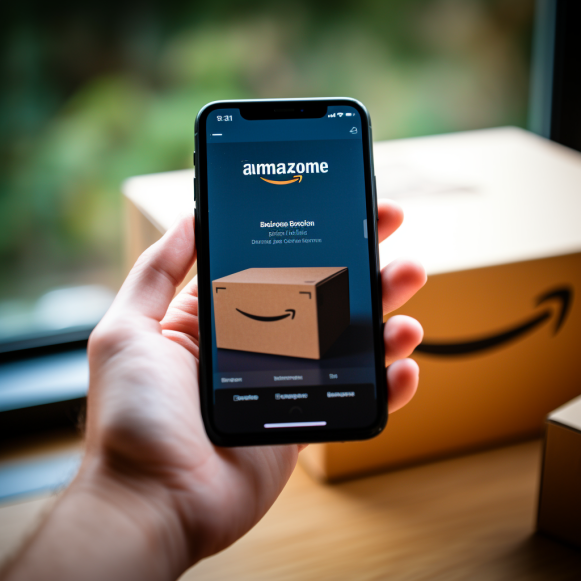5 tips to get primed and ready for Amazon’s October Prime Day

Amazon’s Prime Big Deal Days event takes place next week, on October 10 and 11. If you agree that the name “Prime Day 2.0” is awkward, call it that. The event promises more price cuts on a variety of products as well as the opportunity to cross-shop competing retailers.
A summary of October sales
Black Friday in October is Amazon’s idea, but other retailers will not be outbid. Here’s a rundown of the key dates and information.
Target Circle Week, which runs from October 1 to 7, is already underway.
- Deals are only available to Target Circle members, but joining and using Circle is free.
- Get discounts on everything from toys and kitchen supplies to diapers and wipes, both online and in-store.
Walmart’s Deals Holiday Kickoff begins on Oct. 9 at 7 p.m. ET and continues through Oct. 12.
- Because this sale isn’t limited to Walmart+ members, all shoppers can take advantage of the savings.
- Discounts on giftable items such as electronics, apparel, home decor, and more are to be expected.
Amazon Prime Big Deal Days begins on October 10 at 3 a.m. ET and runs through October 11.
- The deals are only available to Amazon Prime members; Prime costs $14.99 per month or $139 per year. (A 30-day free trial is available for new users.)
- Expect deal drops throughout the event, and Prime members can request special invites to doorbusters that may sell out ahead of time.
Oh, and Best Buy is having a 48-Hour Flash Sale from October 10 to 11.
It’s akin to “shopping Armageddon,” according to Charles Lindsey, associate professor of marketing at the University at Buffalo School of Management. “Retailers are going earlier and earlier every year in the hopes of locking in a certain percentage of consumers’ ‘holiday wallets’ before other retailers can,” according to him.
Similar sales at the same time last year provided a compelling reason for people to begin their Black Friday shopping early. Prices on popular products tracked by NerdWallet have reached or matched year lows.
However, the extended sales season provides more opportunities for shoppers to exceed their gift-buying budgets, according to Lindsey.
Use these strategies to shop the onslaught of early sales while keeping your holiday wallet intact.
1. Make a game plan
According to Lars Perner, assistant professor of clinical marketing at the University of Southern California, approaching internet sales with a plan is essential. “If you go online and look at all of these great deals, you’re going to be tempted, and you may end up buying things that you otherwise wouldn’t have bought,” he says.
Amazon customers are likely to understand. You go online to buy a specific item, say a wireless mouse for your laptop, and you end up purchasing the mouse, as well as a massage gun and a DIY home security system, due to the obvious markdowns.
Before you go shopping, make a list of what you need and know your gift-buying and fun-money budget.
“We only have a limited amount of money to spend,” Perner states. So be prepared to be enticed and understand the consequences of overspending, he says.
2. Plan your shopping and set a time limit.
You’ve probably heard of timeboxing work tasks. It’s a strategy in which you set aside time for a task, work on it for a short period of time, and then move on. According to the Project Management Institute, the concept promotes focus and clarity of objective. This method can be used for a more focused and cost-conscious online shopping experience.
If you intend to browse, resist the urge to check Amazon like a social media app, and set aside a specific time of day to do so. Perhaps you end your day with a half-hour online shopping spree when your mind is clear and your guard is up against overbuying.
3. Negotiate a fair price.
With deals happening all the time, taking the sale price at face value is no longer sufficient. Markdowns, according to Perner, can be deceptive.
“The deal might say 45% off, but that’s not going to be 45% off the regular price,” according to him. Instead, it’s more likely to be a percentage off the item’s list or suggested retail price, which may or may not reflect the retailer’s standard pricing.
“It could still be a good deal, like 15% off the regular price.” But, once again, some of the discounts will appear larger than they are,” says Perner.
Before you buy, you can easily get a sense of the going rate. Lindsey recommends using a site like Camelcamelcamel, which tracks the price history of Amazon products, or other browser-based coupon finders to confirm the quality of deals. The Honey extension, a software add-on for browsers such as Chrome, also shows product prices over time.
4 If you want, you can wait until Black Friday.
Of course, you could take a chance and wait until the day after Thanksgiving. According to NerdWallet, Prime Day and early October sales like Prime Big Deal Days offer prices comparable to Black Friday, but there’s no substitute for the real thing. Actual Black Friday (and Cyber Monday) sales events continue to be popular, and there is less risk of disruption this year.
“The last few years [of] Black Friday sales might have been more limited during the pandemic,” Perner claims. He recalls the supply chain issues and the backlog of ships arriving in ports.
“But we’re past that now, and the Chinese economy is slowing down,” he continues.
According to Perner, these factors could reduce the cost of producing imported goods. As a result, retailers may offer even better deals.
5 Ignore the deal days entirely.
Perner admits that when he needs a break, he’ll look at Amazon’s deal of the day, but he’s gotten better at resisting impulse purchases over time. He recommends leaving the delivery boxes in the hall or garage as “visual evidence of how much you might be buying.”
Perhaps you don’t require all of that.
When holiday sales kickoff days have a regular place on the calendar and in the culture, it’s difficult to put down the phone or close the laptop. However, if you can resist the temptation, you can save the most money by avoiding the deal days entirely.






